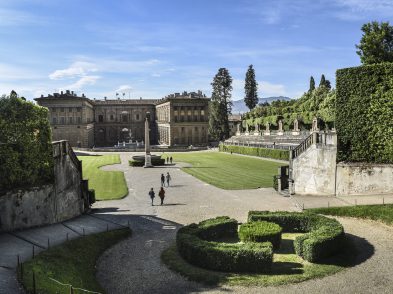The Italian wine world is in a tizzy over recent allegations of fraud in the production of Brunello, one of the country’s most prestigious wines. Though nothing official had been released, rumors of an investigation began swirling earlier this month in the tiny Tuscan town of Montalcino, where Brunello is produced. Florence and Siena papers were quick to jump on a report that Italy’s financial police, the Guardia di Finanza, were investigating the possibility that some post-2003 Brunello wines included grapes from Puglia. It was later learned that the actual inquiry centers on a three-year investigation of the local growers’ consortium, the Consorzio del Brunello di Montalcino, charged with monitoring Brunello standards according to Denominazione di Origine Controllata e Garantita (DOCG) regulations. Italian law states that Brunello must contain only Sangiovese grapes from vineyards officially registered with the consortium. A press release from the consortium states that police found 42 acres (approximately one percent of the total production region) in violation of DOCG rules.
Though vineyards have been cultivated on the Montalcino hillside since the Middle Ages, Brunello dates back to the late 1800s, when Ferruccio Biondi-Santi began experimenting with a robust varietal called Brunello or Sangiovese Grosso, which he then aged in oak barrels and in the bottle before releasing them. This new aging process, which lasts five to six years, yields a strong, less fruity and high-acidity wine that was much heavier and more tannic than the lighter, younger red wines being produced in Tuscany at the time. The muscular grape varietal and innovative production method proved to be a winning combination as other producers began to follow suit. This powerful, complex new wine quickly became known as the ultimate ex-pression of the Sangiovese grape.
It wasn’t until the 1960s, however, that Brunello began to take off on the world market, as Biondi-Santi, Frescobaldi and other top-notch producers began showing up in the glasses of wine connoisseurs all over the world. Global recognition of its excellence led to its current prestigious status, which ensures that bottles often don’t come cheap-especially abroad. Producers in the region’s 4,000 acres produce approximately seven million bottles of the select wine per year-60 percent of which is sold outside of Italy. The United States is the largest importer at 25 percent, followed by Germany, Switzerland and Canada.
Its status as reigning king of Italian wine increased public interest in the current investigation, which led to police seizures of hundreds of thousands of bottles of the 2003 vintage on the suspicion of containing grapes other than Sangiovese. Though the inquiry involves 13 producers, only four vintners have had their wine impounded, including estates owned by Frescobaldi, Antinori, Argiano and the number one Brunello importer to the United States, Castello Banfi.
The investigation, dubbed ‘Brunellogate’, threatens the livelihood of Montalcino. The local media report that some 400 employees working at Castello Banfi risk losing their jobs due to the wine seizure and production block. As well, with 3,000 out of 5,000 Montalcino residents working in the lucrative local wine industry, the Brunello scandal and subsequent drop in sales expected could rock the local economy. Local wine makers argue that they are ‘victims of media terrorism’ while the Brunello di Montalcino consortium is currently exploring ways to counteract the damage done to Brunello’s image following the scandal.
The current investigation focuses on only one percent of the vineyards, alleged to contain mostly Merlot vines thought to be used to cut the Brunello. However, most winemakers agree that anything below 2 to 3 percent is virtually impossible to detect the presence of another grape variety in a 100 percent varietal wine. With such low numbers in the balance, it is clear that the quality of all Brunello is not on trial; however, the industry is bracing for a backlash that could damage the reputation of Brunello, the town of Montalcino and Italian wine in general.
Vintners under investigation have denied the allegations and explain the anomalies in various ways. Renzo Cotarella, Antinori’s in-house enologist, cites the possibility that a few non-Sangiovese could have been present since the vineyard was planted. Several Brunello producers also produce Toscana IGT wines that use varieties other than Sangiovese, a fact that Cotarella believes could have set investigators’ sights on particular wineries.
Some industry insiders have questioned the timing of the investigation, citing political motivation behind breaking the news of the inquiry just as Vinitaly-one of the biggest wine fairs in the world-opened on April 3. Pietro Tagliabue of Biondi-Santi-which is not under investigation and has had no wines impounded-told the press that he also questioned the motivation behind releasing the news at that time. ‘It is so well studied, coming just at the beginning of Vinitaly,’ he told Decanter magazine.
Brunello is not alone in the recent crossfire of rumors and allegations-other Italian wines are also coming under scrutiny over the possibility that some 70 million litres of low-quality wine were adulterated with various chemicals, like fertilizers, hydrochloric acid and sulfuric acid. President of the Tuscan region, Claudio Martini, has launched an appeal on youtube in defense of Tuscan wine: ‘One thing is mixing harmful substances into Italian wine; and it is another to blend Brunellos with other grape varietals. Let’s not condemn all wine producers for the mistakes of just a few’.








